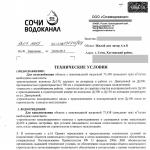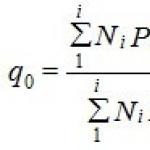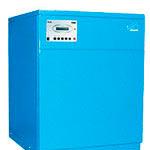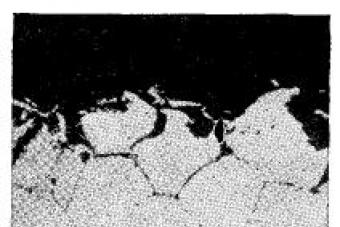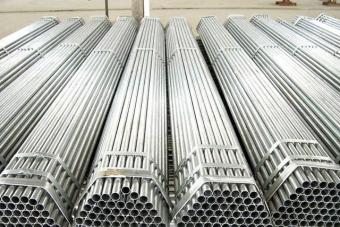Bookmark this site
The control of the meters is carried out by the consumer himself, with whom a service contract has been concluded. If the communication systems through which water is supplied to the facility and discharged into the sewer system are equipped with measuring devices, then the consumer no longer needs to calculate the water consumption depending on the time of the year or day. The objective data obtained by the automatic system excludes the possibility of any disagreement between customers and suppliers, representatives of local communication services.
If technical measuring instruments have not been installed by the client or they are faulty and do not have seals, then the amount of water consumed by consumers is determined according to the capacity of the communication services facilities. These items are spelled out in each contract concluded between contractors and consumers.
The above conditions for the lack of recording of the readings of a private meter include cases of unauthorized access to the water supply system and illegally organized sewage-discharge systems.
Payment methods for water services
If you have a meter on the water supply system, then the readings taken from it remain to be multiplied by the tariff. Separately, you need to calculate the volumes of hot and cold water supply, since their tariffs differ. The amounts received are added up, and the consumer pays for services at the point of payment or through the machine, in accordance with the actual amount, which includes value added tax.
As for the drainage of those consumers who are in a contractual relationship with contractors, and these are owners of private houses, privatized apartments, their calculation of drainage will be slightly different. They will have to pay for this service based on the standards approved by local authorities, which are adopted according to the average water consumption indicators in this region. These standards are recalculated and changed every year. Average standards of water disposal, as well as water supply, are disadvantageous to the consumer, as they are calculated for each person. Therefore, in order to save on utility bills, it is worth installing a meter.
All modern enterprises keep records of resources and their consumption. Water consumption is no exception. To calculate the amount of water consumed by the enterprise, to determine the volume of wastewater discharged, there is balance table of water consumption and water disposal(see fig.). Its preparation is necessary for concluding an agreement with the State Unitary Enterprise Vodokanal. The data in the table show an objective picture of the water circulation in the organization and demonstrate exactly how much water is required for a particular enterprise, and what volume of wastewater is expected to be discharged into the sewer as a result of the facility’s life.
What parameters depend on water consumption and water disposal at the enterprise
Water consumption and water disposal at each enterprise is individual, and depends on the following data:- the size of the working staff of the organization;
- use of certain equipment;
- use of special technologies;
- operating mode of the enterprise;
- the duration of water use for production processes;
- number of consumers.
We fill in the "Balance of water consumption and sanitation"
Step one. Before compiling the table "BVV" should collect all the source data. Namely:- name of water consumers;
- the numerical value of each water consumer per day with units of measure;
- water consumption standards for each specific type of water consumer;
- the mode of operation of water consumers per day and per year in separate columns;
- water consumption of cold water, per day and per year in separate columns;
- water consumption of hot water, per day and per year in separate columns;
- water discharge per day and per year in separate columns;
- regulatory documents on the basis of which the calculation of standards was made.
Please note that for all initial data, units of measurement (number of liters per person, cubic meters, square meters, hours, pieces, etc.) should be determined.
We fill in the first three columns of the balance form of water consumption and water disposal ("serial number", "name of consumers", "amount of water consumption per day"). By the way, there is no specific approved form of balance; the main thing is that it should contain the necessary initial data.
Step Two Table filling
A set of measures aimed at reducing water consumption will significantly reduce the cost of funds, which will affect the cost of production, profit-making by the enterprise. Obviously, compiling a table of the balance of water consumption and sanitation is beneficial for the enterprise itself.
When designing the section "Water supply and Sewerage", it is necessary to calculate the water consumption and water disposal.
In this we will be helped by SNiP 2.04.01-85 * "INTERNAL WATER SUPPLY AND DRAINAGE OF BUILDINGS".
Document SNiP 2.04.01-85 * is outdated, and it is necessary to use the updated version of SNiP 2.04.01-85 - SP 31.13330.2012.
But the new edition does not explain how to calculate water consumption.
After calculating the water consumption, we will receive the following total water and hot water consumption separately: Secondary water consumption, Hourly water consumption, Daily water consumption. As well as the discharge of wastewater into the sewer: Secondary water flow rate, Hourly water flow rate, Daily water flow rate.
Getting to the calculation:
Let's turn to the first document:
3. DETERMINATION OF THE CALCULATED COSTS OF WATER IN WATER SUPPLY AND SEWERAGE AND HEAT SYSTEMS FOR THE NEEDS OF HOT WATER SUPPLY
3.1. Cold, hot water supply and sewerage systems must provide water supply and wastewater (flow), corresponding to the estimated number of water consumers or installed sanitary appliances.
3.2. The second flow rate of water l / s, with water fittings (device), assigned to one device, should be determined:
a separate device - as required;
various devices serving the same water users on the dead-end network section - according to the mandatory;
various devices serving different water consumers - according to the formula  (1)
(1)
where Pi is the probability of action of sanitary appliances, defined for each group of water consumers in accordance with clause 3.4.
q0i - second water consumption (total, hot, cold), l / s, with water fittings (device), adopted in accordance with mandatory Appendix 3, for each group of water consumers.
Notes:
1. When arranging a ring network, the water flow q0 should be determined for the network as a whole and assumed to be the same for all sections.
2. In residential and public buildings and structures for which there is no information on water consumption and technical characteristics of sanitary appliances, it is allowed to accept:
Determination of Secondary Consumption
To determine the Secondary water flow, as a rule, it is sufficient to use the applications 2 and / or 3 of SNiP 2.04.01-85 *. More rarely, formula (1).
These applications contain data tables.
Appendix 2: WATER AND DRAINAGE COSTS OF SANITARY INSTRUMENTS
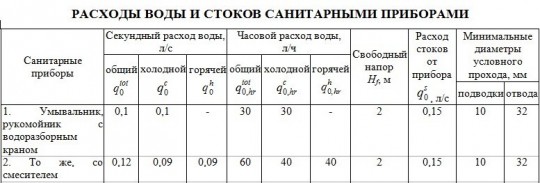
Those. how much water is consumed by 1 sanitary appliance installed in the room.
Or we use app 3: CONSUMPTION WATER CONSUMPTION STANDARDS
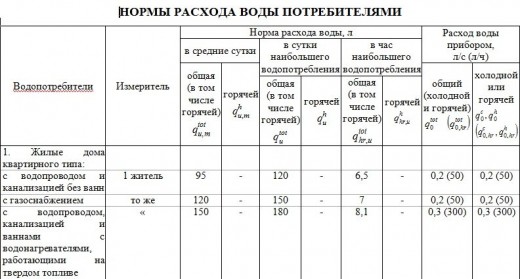
If 10 inhabitants live in the building, 5 workers or in the restaurant prepare 300 dishes a day. Then use .
3.3. The maximum second flow rate of water in the design section of the network q (qtot, qh, qc), l / s, should be determined by the formula
where is the second water flow rate, the value of which should be determined according to p.
alpha is a coefficient determined according to the recommended depending on the total number of devices N on the calculated section of the network and the probability of their action P, calculated according to p. In this table. 1 recommended should be guided by P\u003e 0,1 and N of the appendix 4.
With known calculated values \u200b\u200bof P, N and q0 \u003d 0.1; 0.14; 0.2; 0.3 l / s to calculate the maximum second water flow it is allowed to use nomograms 1-4 of the recommended application 4.
Notes: 1. Water consumption at the end sections of the network should be taken according to the calculation, but not less than the maximum second water consumption by one of the installed sanitary devices.
2. Water consumption for technological needs of industrial enterprises should be defined as the sum of water consumption by technological equipment, provided that the operation of the equipment coincides in time.
3. For auxiliary buildings of industrial enterprises, the q value can be determined as the sum of water consumption for domestic needs according to formula (2) and shower needs - according to the number of installed shower nets according to the mandatory Appendix 2.
3.4. The probability of the action of sanitary appliances P (Ptot, Ph, Pc) in the network sections should be determined by the formulas:
a) with the same water consumers in the building (s) or structure (s) without taking into account changes in the U / N ratio
 (3)
(3)
b) for different groups of water consumers in the building (s) or structure (s) for various purposes
 (4)
(4)
Notes:
1. In the absence of data on the number of sanitary equipment in buildings or structures, the value of P can be determined by formulas (3) and (4), assuming N \u003d 0.
2. For several groups of water consumers for which the periods of highest water consumption will not coincide with the time of day, the probability of action of devices for the system as a whole can be calculated using formulas (3) and (4), taking into account the decreasing coefficients determined during operation of similar systems.
3.5. The maximum second flow rate of wastewater qs, l / s, should be determined:
a) with a total maximum second flow rate qtot \u003d
![]() (5)
(5)
b) in other cases.
Determination of hourly consumption
3.6.
Hourly water consumption with a sanitary appliance  l / h, to be determined:
l / h, to be determined:
a) with the same water users in the building (s) or structure (s) in accordance with mandatory annex 3;
b) with different water consumers in the building (s) or structure (s) - according to the formula
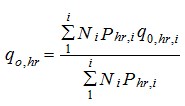 (6)
(6)
Note. In residential and public buildings (structures), for which there is no information on the number and technical characteristics of sanitary appliances, it is allowed to accept:
But sanitary appliances are not used all at the same time. Although when advertising in a popular series, it is possible that all toilets in the house can operate at the same time. In general, therefore, the Probability coefficient for the use of sanitary appliances is calculated
3.7. The probability of using Phr sanitary appliances for the system as a whole should be determined by the formula
 (7)
(7)
3.8. Maximum hourly water consumption ![]() m3 / h, should be determined by the formula:
m3 / h, should be determined by the formula:
![]() (8)
(8)
where is the coefficient determined according to the recommended Appendix 4 depending on the total number of devices N served by the designed system and the probability of their use Phr calculated according to clause 3.7. In this table. 1 recommended appendix 4 should be guided by Phr\u003e 0.1 and N
Note. For auxiliary buildings of industrial enterprises, the qhr value can be determined as the sum of water consumption for the use of showers and household and drinking needs, taken according to mandatory Appendix 3 according to the number of water consumers in the most numerous shift.
3.9. Average hourly water consumption ![]() m3 / h, for the period (day, change) of maximum water consumption T, h, should be determined by the formula:
m3 / h, for the period (day, change) of maximum water consumption T, h, should be determined by the formula:
 (9)
(9)
3.10. When designing direct water intake from pipelines of a heating network for hot water supply, the average temperature of hot water in the risers should be maintained at 65 ° C, and the consumption rates of hot water should be adopted in accordance with the mandatory Appendix 3 with a coefficient of 0.85, while the total amount of water consumed should not be changed .
3.11. The maximum hourly flow rate of wastewater should be taken equal to the estimated flow rate determined in accordance with paragraph 3.8.
3.12. The daily water consumption should be determined by summing the water consumption by all consumers, taking into account the water consumption for irrigation. The daily flow rate of wastewater must be taken equal to water consumption without taking into account the flow rate of water for irrigation.
3.13. Heat flow kW, for the period (day, change) of maximum water consumption for the needs of hot water supply (taking into account heat losses) should be calculated by the formulas:
a) during the average hour
![]() (10)
(10)
b) during the hour of maximum consumption
He looked with a fresh look and realized that at first glance all this seems very complicated and incomprehensible. But it’s worth making the calculation 1 time and everything falls into place.
I think for clarity, we need to make an example of calculation.

